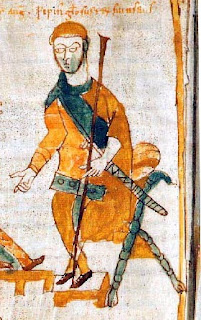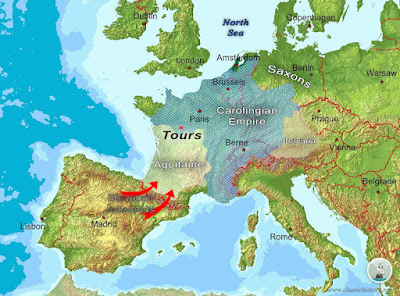He had made many enemies in Europe. The Byzantine Emperor Isaac II Angelos was one, because Richard annexed the island of Cyprus (a Byzantine possession). Holy Roman Emperor Henry VI was angered because Richard supported King Tancred of Sicily, who had usurped the position from its proper heiress, Henry's wife Constance. Leopold of Austria blamed Richard for the murder of Leopold's cousin, Conrad of Montferrat.
So when Richard's ship was wrecked near Aquileia and Richard had to travel over land to get back home, he passed through Vienna, enabling Leopold to capture him around Christmas 1192. Interfering with a Crusader was against papal decree, but Richard had also personally offended Leopold by getting rid of Leopold's banner on the walls of Acre, even though Leopold had been with him at the Siege of Acre. When word got out, Pope Celestine III excommunicated Leopold.
Word got back to England of Richard's captivity, but no one knew where he was being held. He was given over to Henry VI's care on 28 March 1193, who imprisoned him at Trifels Castle. Not only was Henry angered at Richard's previous actions, he also had a goal: conquering all of southern Italy. This required military might, and that required money. Holding a king for ransom was one sure way of acquiring funds.
Henry's status as Holy Roman Emperor made Celestine reluctant to excommunicate him. Richard's treatment was initially respectful, but Richard treated Henry with disdain. Henry convened a council to condemn Richard for the capture of Cyprus, the insult to Leopold, the death of Conrad, and making a truce with Saladin. Richard defended his actions, and explained his lack of respect for Henry's imperial title by saying "I am born in a rank which recognizes no superior but God."
Afterward, Richard was kept in chains "so heavy that a horse or ass would have struggled to move under them." Henry demanded a ransom of 150,000 marks (100,000 pounds of silver). Richard's mother, Eleanor of Aquitaine, now in her early 70s, took action, riding the country to raise funds and writing the pope about the horrible situation. A tax of 25% of the value of property was decreed against layman and all churches. Meanwhile, Richard's brother John and King Philip of France offered Henry 80,000 marks to keep Richard at least until Michaelmas 1194 (29 September in Europe).
Henry did something honorable and refused their offer. The ransom from England came through, and Richard was freed on 4 February 1194. (The illustration shows Richard kissing the feet of the emperor.) Upon his return to England he forgave John's actions and named John his heir (instead of their nephew Arthur, son of their brother Geoffrey).
And now for something completely different: Michaelmas. What was it about, and why did I have to specify "in Europe" above? I'll explain next time.





























